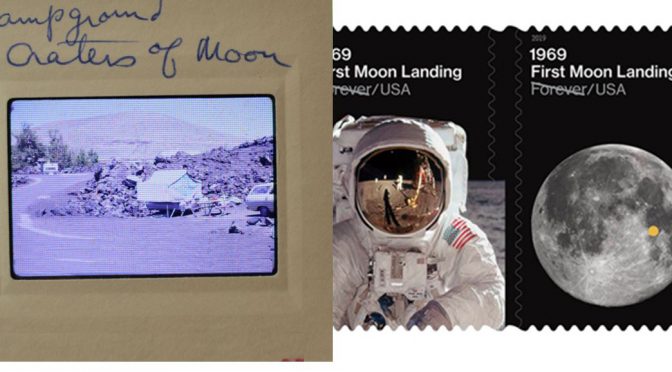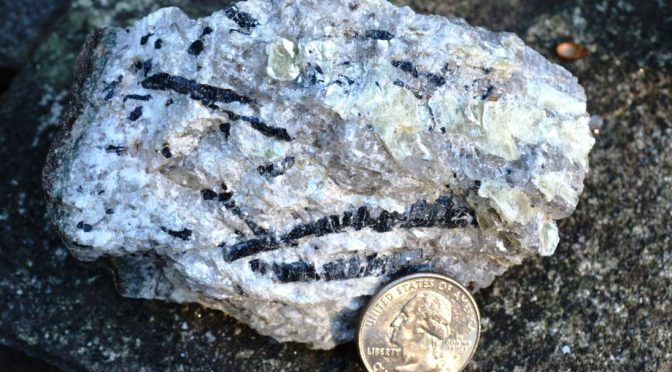It was July 20, 1969. I was 14 years old and visiting/camping at Craters of the Moon National Monument in Idaho with my parents. When we entered the Visitor’s Center a crowd was gathered around a small black and white television set that had been set up on top of the ranger’s desk. The exhibit area across the hall was virtually empty. Everyone was watching two Americans (Neil Armstrong and Buzz Aldrin) conducting experiments and picking up rocks on the moon. The image was blurry on the 14” screen and I was too far away to see much of it, but my thoughts from the day remain intact as the 50th anniversary of that day approaches.
Monthly Archives: July 2019
Hamlin State Beach .. and garnet sand
Last March, Jim Rienhardt brought his collection of some 270 sands to the WCGMC meeting and told us about arenophiles (sand collectors) (Reinhardt, 2018). Jim repeated his presentation at the Rochester Academy of Science later that month. At that meeting RAS member Paul Dudley brought along some sand he had collected from Hamlin State Beach some 50 years ago. Paul’s sand was red and dominated by garnet, but full of other heavy minerals. He told us that the sand had been collected during a college field trip late in the spring when Lake Ontario first started to recede from winter highs.
I parked that in my memory and on my calendar and on July 8th set out to find some “garnet” sand for myself. I was not disappointed. The first stop I made was at Area #5 at the west end of Hamlin State Beach. The Lake level seemed to have dropped, perhaps a foot from its highest erosional cut. And in the bank left when the lake level was highest was a 2-3 cm thick band of black and red sand. I sampled and took pictures and moved to other areas of the park.
Barrus Farm Pegmatite
The Barrus Farm pegmatite outside the small hamlet of Lithia, MA has become a regular stop on Wayne County Gem and Mineral Club’s western New England field trip each of the past three years. It is not a large site and the pegmatite there has never been quarried, but it does hold a special place in the world of gemology. It is the type locality for goshenite, which is white beryl. Yale University mineralogist Charles Sheppard identified the Barrus Farm white beryl in 1884 and named it after the town of Goshen about 3 miles east of the location. Continue reading Barrus Farm Pegmatite


